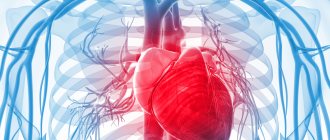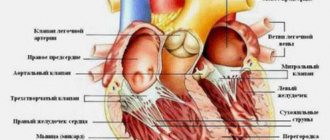Phone number of the psychiatrist on duty at SCH
+7
Vascular dementia is characterized by acute or chronic decline in cognitive function, developing as a result of a general decrease in blood supply to the brain or as a result of local infarctions, which, in most cases, are associated with cerebrovascular diseases.
Dementia is a chronic, usually irreversible, decline in cognitive function that affects all aspects of cognitive activity.
Vascular dementia is the second leading cause of dementia in older people. In most cases, it develops in men, usually after the age of 70. It most often occurs in people with vascular risk factors (including arterial hypertension, diabetes mellitus, hyperlipidemia, smoking) and in those who have suffered several strokes. Many patients have a combination of vascular dementia and Alzheimer's disease.
Dementia should not be confused with delirium, although cognitive function is impaired in both conditions. The following signs allow you to distinguish them:
- Dementia primarily affects memory, is usually caused by anatomical changes in the brain, has a slow onset, and is usually irreversible.
- Delirium primarily affects attention, usually occurs during acute illness or as a result of toxic exposure (sometimes life-threatening), and is often reversible.
Other specific characteristics also help distinguish the 2 types of disorders (Differential diagnosis of delirium and dementia*).
Etiology
Vascular dementia typically occurs in situations where multiple brain infarcts (or sometimes hemorrhages) result in the death of enough neurons or axons to impair brain function.
- Vascular dementia includes the following:
- Extensive lacunar infarction
: Damage to small blood vessels. Multiple lacunar infarcts occur deep within the white and gray matter of the cerebral hemispheres. - Multi-infarct dementia
: Damage to medium-sized vessels. - Single infarctions in strategic areas
: Single infarction in a functionally significant area of the brain (for example, angular gyrus, thalamus). - Binswanger's disease (subcortical arteriosclerotic encephalopathy)
: It is a rare form of dementia that occurs due to damage to the small vessels of the brain and is associated with severe, poorly controlled arterial hypertension and systemic damage to the vascular system. This causes diffuse and irregular loss of axons and myelin with widespread gliosis, tissue death due to infarction, or loss of blood supply to the white matter of the brain.
Prevention of dementia
Eliminating the causes of dementia should begin at a young age.
- Quit smoking and alcohol. Abuse of bad habits causes cerebral infarctions and strokes.
- Play sports and exercise. Movement improves the exchange of oxygen in the blood, the cells receive constant fresh nutrition. Walking improves thinking and attention.
- Remove spicy, fatty foods with excess carbohydrates from the menu. Include fresh vegetables, fruits, nuts, cereals, fish and seafood in your diet.
- Avoid intoxication of the body. Do not choose work associated with hazardous production.
- Get tested regularly for blood sugar and cholesterol levels, and do an ultrasound of your internal organs.
- Train your intellect constantly: learn new information, a foreign language, a profession.
It is important to undergo a medical examination every year from a general practitioner, independently or from a labor organization.
Clinical manifestations
Symptoms and signs of vascular dementia are similar to those of other forms of dementia (eg, memory loss, impaired executive function, difficulty initiating activities or tasks, slowed thinking, personality changes, mood changes, linguistic deficits). However, compared with Alzheimer's disease, vascular dementia tends to cause memory loss later and affect executive function earlier. Also, symptoms may vary depending on the location of the heart attacks.
Unlike other dementias, multi-infarct dementia tends to develop in steps; each episode of deterioration is accompanied by further intellectual decline, sometimes followed by moderate recovery. Subcortical vascular dementia is caused by ischemic injury to small vessels (which includes large lacunar infarction and Binswanger dementia), and tends to cause small, gradual episodes of deficits; thus, the disease progresses gradually.
- As the disease progresses, focal neurological symptoms often develop:
- Increased deep tendon reflexes
- Extensor plantar responses
- Gait disorders
- Limb muscle weakness
- Hemiplegia
- Pseudobulbar syndrome with pathological laughter and crying
- Other signs of extrapyramidal disorders
- Aphasia
Cognitive function may be focally affected. For example, short-term memory may be less affected than in other forms of dementia. Because the defects may be focal, patients may retain more aspects of mental function. Thus, they may be largely aware of their defect, and depression may develop more often in this type of dementia than in other cases.
Neurological disorders
In the initial stage of the disease, neurological dysfunctions manifest themselves as general symptoms. Weakness and fatigue, absent-mindedness, and irritability appear. I am bothered by systematic headaches and sleep is disturbed. There is an unstable emotional background. Depressive states are possible. The person is unrestrained, hot-tempered, and embittered. Emotional incontinence usually manifests itself in violent crying or laughter, weakness.
Among other neurological indicators, cerebellar syndrome occurs, characterized by uncoordinated movements. It seems that the arms and legs are moving chaotically. Because of this, the gait changes: it becomes shaky, slack. The person appears to be drunk. Instability of the step provokes falls.
The disease causes accentuation of personality traits. For example, if previously a person was scrupulous and meticulous, then pathology turns him into a picky grumbler.
Pseudobulbar syndrome is expressed by a triad of signs:
- dysarthria - pronunciation disorder;
- dysphonia – loss of voice sonority;
- dysphagia – problems with swallowing.
There are cases of paralysis and paresis, but quite rarely. Muscle tone and reflexes are increased.
Quite often, malfunctions in the functioning of the pelvic organs occur, and epileptic seizures occur.
In general, dementia of vascular origin is characterized by narrowness and fixation of mental processes, loss of flexibility of thinking, fading of cognitive abilities, and a narrow range of interests.
Diagnostics
- Similar to diagnosis for other forms of dementia
- Neurotomography
Diagnosis of vascular dementia is similar to diagnosis of other types of dementia. To make a general diagnosis of dementia, all of the following criteria must be present:
- Cognitive or behavioral (neuropsychiatric) symptoms affect the ability to function at work or perform normal daily activities.
- These symptoms represent a clear decline from previous levels of functioning.
- These symptoms are not explained by the presence of delirium or a major mental disorder.
The assessment of cognitive impairment includes a history from both the patient and his acquaintances, plus a so-called bedside mental status examination or, if the results are equivocal, formal neuropsychological tests.
Differentiation of vascular dementia from other forms of dementia is based on clinical assessment. Factors that suggest vascular dementia (or Alzheimer's disease with cerebrovascular disease) include the following:
- Signs of cerebral infarctions
- High score on the Khachinsky Ischemia Rating Scale
- Clinical features consistent with vascular dementia (eg, marked decline in executive function with mild or absent memory loss)
Confirmation of vascular dementia is a history of stroke or evidence of a vascular cause of dementia detected by neuroimaging. If there are focal neurological symptoms or signs of cerebrovascular disease, a thorough examination is necessary to exclude stroke.
- CT and MRI can reveal
- Bilateral multiple infarcts in the dominant hemisphere and limbic structures
- Multiple lacunar strokes
- Periventricular white matter lesions extending into the white matter
- In Binswanger's disease, leukoencephalopathy in the area of the centrum semiovale adjacent to the cortex, often with the presence of lacunae extending to the gray matter structures in the deep parts of the cerebral hemispheres (including the basal ganglia, thalamus)
In the differential diagnosis of vascular dementia and Alzheimer's disease, the use of the Hachinsky ischemic scale (Modified Hachinsky Ischemia Rating Scale) may be useful.
Cases of vascular dementia
Scientists have established for certain that the Russian writer, imperial maid of honor Smirnova Alexandra Osipovna, whom A.S. once admired. Pushkin, suffered from vascular dementia.
From her youth, she was distinguished by her gloomy mood or its swings, insomnia. At the age of 40, she suddenly lost weight and became haggard. I didn’t want to see doctors. She was treated on her own: sermons, rituals. Her heredity was burdened with mental disorders.
At the age of 69, her condition worsened further. Her speech became incoherent, she rearranged syllables in words and distorted them. Memory suffered and behavior was disrupted. The mental state deteriorated sharply, reaching the level of mental disorder.
According to data collected from eyewitnesses, Alexandra Osipovna was diagnosed with “atherosclerotic dementia.”
Another famous writer, the author of Uncle Tom's Cabin, Harriet Beecher Stowe, was also diagnosed with vascular dementia. She devoted her entire life to caring for her large family, fighting poverty and disease. In the last years of her life, after the death of her husband, Harriet lived completely alone. She exhibited strange behavior. Sometimes she came to Twain’s house and wandered around the rooms there. She didn’t pay attention to anyone, she was aloof. After walking around a bit among the people, she returned home. Her mental abilities had completely deteriorated, she practically could not take care of herself. The patient's memory underwent special destructive changes.
Treatment
- Safety precautions and supportive care
- Management of vascular risk factors, including smoking cessation
Safety measures and supportive care are similar to those for other forms of dementia. For example, the environment should be bright, fun and familiar, and should be aimed at reinforcing orientation (eg, placing large clocks and calendars in the room). Patient safety measures (eg alarm monitoring systems for patients who may become lost) should be implemented.
Troubling symptoms can be treated.
Management of vascular risk factors (eg, hypertension, diabetes, hyperlipidemia) may slow the progression of vascular dementia and help prevent future strokes, which may lead to worsening cognitive impairment. Treatment includes the following:
- Blood pressure control
- Cholesterol-lowering therapy
- Regulation of plasma glucose (90 to 150 mg/dL)
- To give up smoking
Drugs such as cholinesterase inhibitors and memantine may be helpful if you have Alzheimer's disease. The use of cholinesterase inhibitors may improve cognitive function. The use of the NMDA receptor antagonist (N-methyl-D-aspartate), memantine, may slow the loss of cognitive function in patients with moderate to severe dementia and may be synergistic with the use of cholinesterase inhibitors.
However, the effectiveness of cholinesterase inhibitors and memantine in vascular dementia has not been established. However, the use of these drugs makes sense because older patients with vascular dementia may also have Alzheimer's disease.
Basic provisions
- Vascular dementia can occur as a series of discrete episodes (which may initially begin as gradual deterioration) or as a single episode.
- Focal neurological symptoms can help differentiate vascular dementia from other types of dementia.
- Will confirm that dementia is vascular based on history of stroke or neuroimaging findings that suggest a vascular cause.
- Vascular risk factors must be monitored, and if Alzheimer's disease may also be present, treatment with cholinesterase inhibitors and memantine is recommended.
Authors: Juebin Huang, MD, PhD, Memory Impairment and Neurodegenerative Dementia (MIND) Center, University of Mississippi Medical Center Last full review/revision March 2021 by Juebin Huang, MD, PhD
Caring for a patient with dementia in a boarding house
Boarding houses are divided into two types: public and private. People are admitted to public institutions based on referrals from social service centers. No special voucher is required for a private boarding house. The establishments provide similar services. Differences may relate to the quality and cost of service.
The advantages of a private boarding house are:
- small number of residents;
- modern rehabilitation equipment and technical equipment;
- personal care for seriously ill patients.
At home, care falls on the shoulders of one family member; in a boarding house, care services are provided by different employees. The staff not only have experience in caring for older people with chronic diseases, but also undergo regular training. A patient with dementia receives:
- medical care for illness;
- psychological assistance;
- hygiene care;
- fractional dietary meals.
Patients do not feel lonely. The elderly live surrounded by peers; leisure programs and hobby classes are organized for them.
You may also be interested in the article: How to choose a private facility for the elderly
Special forms of late-life psychoses
This is a polyetiological group of mental diseases that develop in connection with endogenous-organic, exogenous, symptomatic and vascular determinants, similar in their manifestations to exogenous types of reactions. In modern taxonomies of mental disorders they occupy different places; in ICD-10 they are coded under headings G06.0–G06.9. There are acute psychoses and chronic hallucinosis.
| | Read about the treatment of psychosis |
Stages of the disease
According to the stages, the disease develops from mild (initial), through moderate to severe (terminal).
Mild degree
It manifests itself in forgetfulness and absent-mindedness, and most often the patient himself notices this forgetfulness and realizes that he has problems with memory. For example, he does not remember where he just put something, and cannot always find the words when talking. Over time, the events of the very recent past, what literally just happened, begin to be forgotten. Problems arise with organizing one's own time and performing routine tasks if they involve a certain set of sequential actions. Also at this stage, the patient’s character changes (the person becomes suspicious and aggressive), intellectual function, and sometimes practical skills are lost. It is at this stage that the help of a psychiatrist is simply necessary.
Problems arise with organizing one's own time and performing routine tasks if they involve a certain set of sequential actions. Also at this stage, the patient’s character changes (the person becomes suspicious and aggressive), intellectual function, and sometimes practical skills are lost. It is at this stage that the help of a psychiatrist is simply necessary.
Middle stage
As the disease progresses to a moderate stage, memory functions deteriorate. The patient no longer remembers not only the events that just happened, but also moments of the recent past. Often there is a “confabulation effect” - when the patient’s brain begins to replace reality with fiction or memories from the distant past. For example, an older person with dementia may start getting ready for school or the skating rink.
At this stage, the patient also begins to lose practical skills, speech and thought processes are increasingly disrupted, signs of social phobia appear, serious difficulties arise with the functioning of the vestibular apparatus, orientation in space worsens, even in a familiar one (within one’s own apartment, for example).
In a moderate degree of illness, the patient needs daily care and monitoring from relatives or specialists. Another sign may be autoagnosia - failure to recognize oneself in the mirror.
Severe stage
The severe (terminal) stage is characterized by the impossibility of self-care, motor problems associated with complete disorientation in time and space, outbursts of aggression and deep memory loss (the patient may forget his name).
In the terminal stage, the prognosis for life is up to 3 years in the case of constant professional care and supervision by specialists. Ideally, an elderly person at this stage of the disease should be admitted to a hospital.










